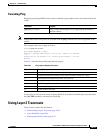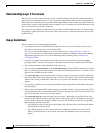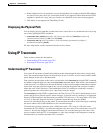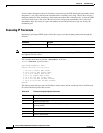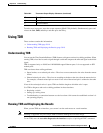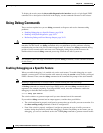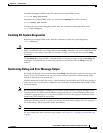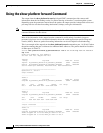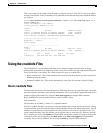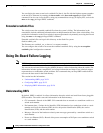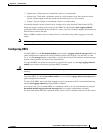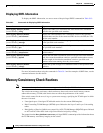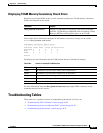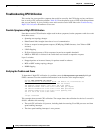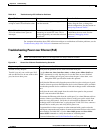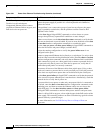
38-23
Catalyst 2960 and 2960-S Switch Software Configuration Guide
OL-8603-09
Chapter 38 Troubleshooting
Using the crashinfo Files
This is an example of the output when the packet coming in on port 1 in VLAN 5 is sent to an address
already learned on the VLAN on another port. It should be forwarded from the port on which the address
was learned.
Switch# show platform forward gigabitethernet0/1 vlan 5 1.1.1 0009.43a8.0145 ip 13.1.1.1
13.2.2.2 udp 10 20
Global Port Number:24, Asic Number:5
Src Real Vlan Id:5, Mapped Vlan Id:5
Ingress:
Lookup Key-Used Index-Hit A-Data
InptACL 40_0D020202_0D010101-00_40000014_000A0000 01FFA 03000000
L2Local 80_00050009_43A80145-00_00000000_00000000 00086 02010197
Station Descriptor:F0050003, DestIndex:F005, RewriteIndex:0003
==========================================
Egress:Asic 3, switch 1
Output Packets:
------------------------------------------
Packet 1
Lookup Key-Used Index-Hit A-Data
OutptACL 50_0D020202_0D010101-00_40000014_000A0000 01FFE 03000000
Port Vlan SrcMac DstMac Cos Dscpv
interface-id
0005 0001.0001.0001 0009.43A8.0145
Using the crashinfo Files
The crashinfo files save information that helps Cisco technical support representatives to debug
problems that caused the Cisco IOS image to fail (crash). The switch writes the crash information to the
console at the time of the failure. The switch creates two types of crashinfo files:
• Basic crashinfo file—The switch automatically creates this file the next time you boot up the Cisco
IOS image after the failure.
• Extended crashinfo file—The switch automatically creates this file when the system is failing.
Basic crashinfo Files
The information in the basic file includes the Cisco IOS image name and version that failed, a list of the
processor registers, and other switch-specific information. You can provide this information to the Cisco
technical support representative by using the show tech-support privileged EXEC command.
Basic crashinfo files are kept in this directory on the flash file system:
flash:/crashinfo/.
The filenames are crashinfo_n where n is a sequence number.
Each new crashinfo file that is created uses a sequence number that is larger than any previously existing
sequence number, so the file with the largest sequence number describes the most recent failure. Version
numbers are used instead of a timestamp because the switches do not include a real-time clock. You
cannot change the name of the file that the system will use when it creates the file. However, after the
file is created, you can use the rename privileged EXEC command to rename it, but the contents of the
renamed file will not be displayed by the show stacks or the show tech-support privileged EXEC
command. You can delete crashinfo files by using the delete privileged EXEC command.



